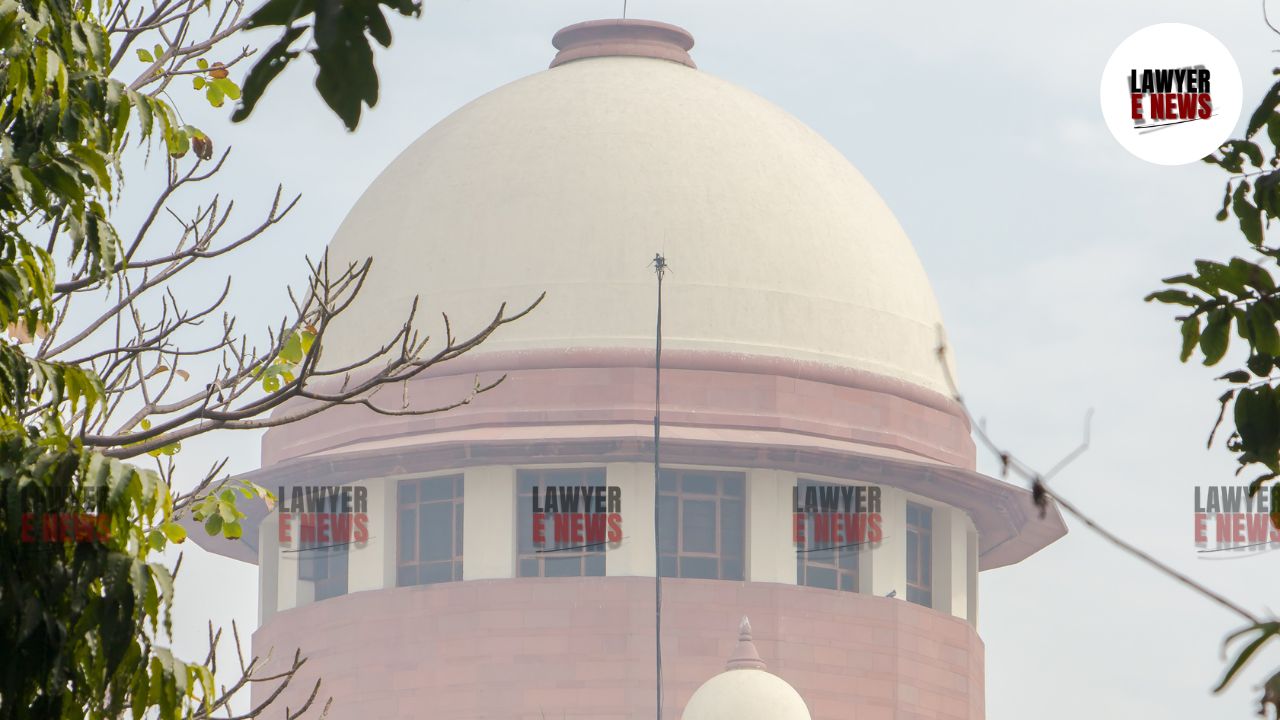-
by Admin
15 December 2025 5:11 PM



States Ordered to Enforce Section 136A of Motor Vehicles Act and Submit Progress Reports by December 2024. Supreme Court of India in S. Rajaseekaran v. Union of India & Ors., Writ Petition (Civil) No. 295 of 2012, issued critical directions for the implementation of Section 136A of the Motor Vehicles Act, 1988, which mandates the use of electronic devices such as speed cameras, CCTV, and body-worn cameras for monitoring road safety. The Court stressed the urgent need for electronic enforcement to reduce traffic violations and improve road safety. State Governments were directed to implement the provisions immediately and provide progress reports by December 6, 2024, with a review scheduled on December 13, 2024.
The writ petition, filed by S. Rajaseekaran, raised concerns over the delay in the implementation of Section 136A of the Motor Vehicles Act, which came into effect on April 1, 2021. This section, alongside Rule 167A of the Central Motor Vehicles Rules, 1989, was designed to ensure electronic monitoring on national highways, state highways, and urban roads using devices like speed cameras, CCTVs, and body-worn cameras for better traffic law enforcement. However, the petitioner highlighted that this crucial provision had not yet been effectively enforced by most States, leaving road safety enforcement lagging.
Section 136A mandates electronic monitoring of road safety through devices like speed cameras, CCTV cameras, and body-worn cameras. The Court emphasized the importance of this provision, stating:
"If Section 136A is implemented, the State machinery will easily get the data and information of the vehicles and individuals violating the provisions of the 1988 Act, so that violators can be prosecuted." [Para 3]
The Court noted that the provision facilitates automated enforcement of traffic laws, making it easier to prosecute offenders using electronic evidence, rather than relying solely on law enforcement personnel to observe violations in real-time.
The Court further stressed the importance of Rule 167A, which sets out the guidelines for the installation and certification of electronic monitoring devices, and directed State Governments to ensure these are implemented in high-risk corridors and high-density areas. Rule 167A also prescribes the issuance of e-challans based on photographic and video evidence from the electronic devices. The Court directed:
"State Governments shall ensure that appropriate electronic enforcement devices are placed at high-risk and high-density corridors on National Highways and State Highways, and at critical junctions in major cities." [Para 4]
To ensure the continuous monitoring of the implementation, the Court tasked the Supreme Court Committee on Road Safety with overseeing the execution of Section 136A and Rule 167A across the country. The Court made it clear that these electronic devices should not be used for surveillance, but strictly for the purpose of traffic enforcement. The Committee was directed to take necessary steps in ensuring compliance by State Governments. The Court said:
"The issue of implementation of Section 136A of the 1988 Act and Rule 167A of the 1989 Rules can always be monitored by the said Committee after considering the views of all stakeholders." [Para 7]
The Supreme Court issued the following key directives:
Immediate Implementation of Section 136A: All State Governments and Union Territories were directed to immediately implement Section 136A of the Motor Vehicles Act and Rule 167A of the Central Motor Vehicles Rules.
Progress Reports by December 6, 2024: States such as Delhi, Karnataka, Kerala, Maharashtra, Tamil Nadu, and West Bengal were specifically instructed to submit reports on the steps taken to implement these provisions by December 6, 2024. The Court will review the reports on December 13, 2024.
Monitoring by Supreme Court Committee on Road Safety: The Committee was tasked with ensuring that the provisions are enforced and that e-challans are issued based on footage from the electronic enforcement devices.
Warning Signs and Notifications: The Court highlighted the importance of placing conspicuous warning signs before stretches monitored by electronic enforcement devices and required that physical stop lines and pedestrian crossings be clearly marked to improve road safety compliance.
Certification and Renewal of Devices: The Court directed that the electronic enforcement devices should be certified and renewed annually to ensure their proper functioning. Any footage captured by these devices must be stored until the disposal of the case or appeal.
The Supreme Court's order marks a significant step toward improving road safety in India through the effective implementation of electronic enforcement measures. By mandating immediate action and progress reporting, the Court has ensured that Section 136A of the Motor Vehicles Act and Rule 167A will finally be enforced, making roads safer and reducing traffic violations. The Court also balanced the need for enforcement with privacy concerns, explicitly ruling out the use of these technologies for surveillance purposes.
Date of Decision: September 2, 2024
S. Rajaseekaran v. Union of India & Ors.
